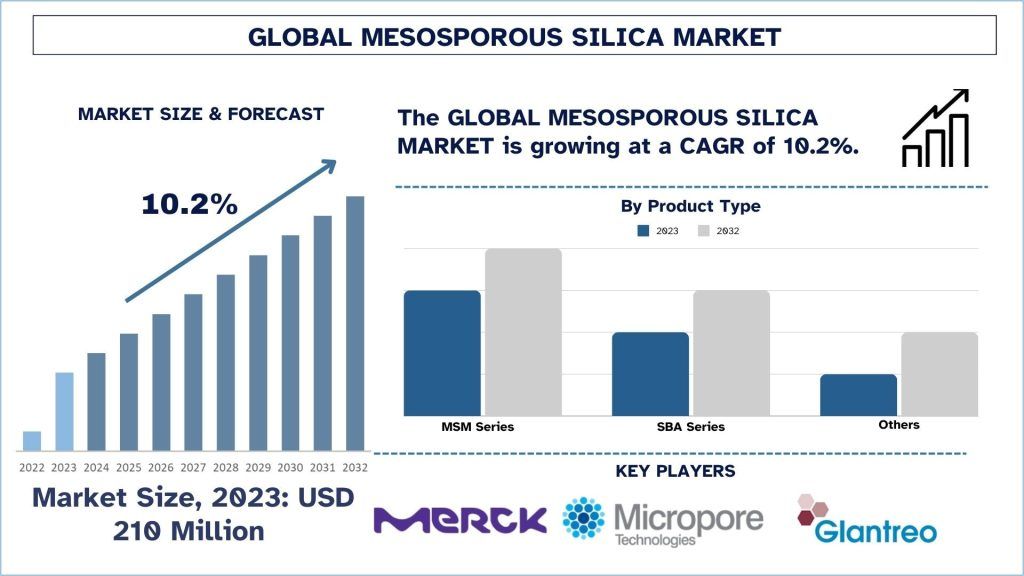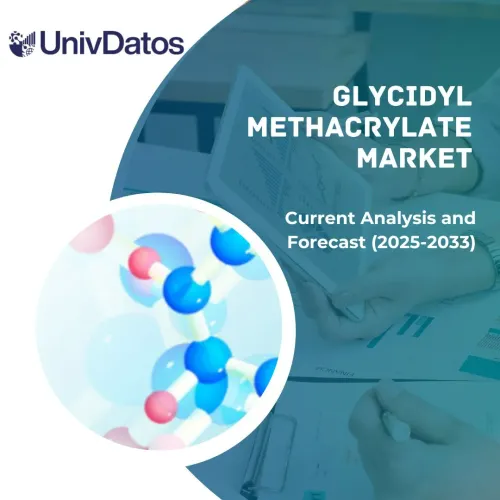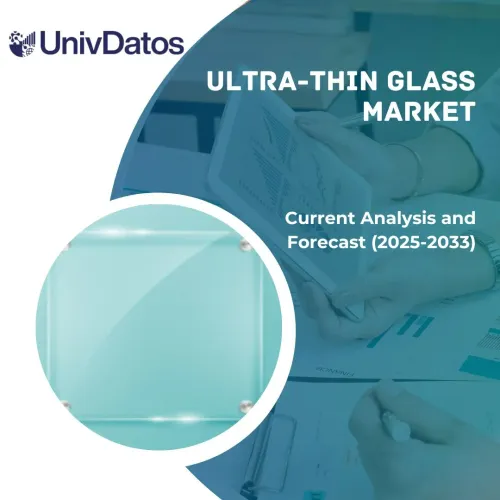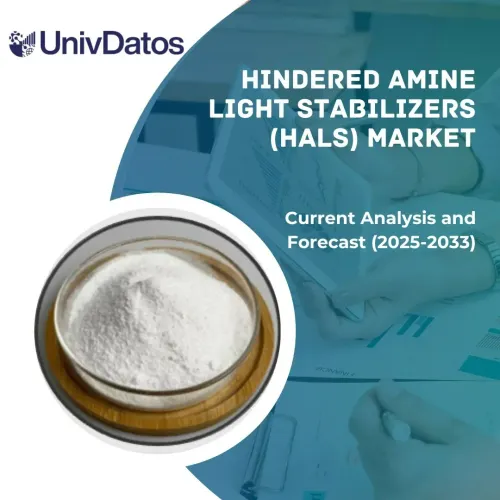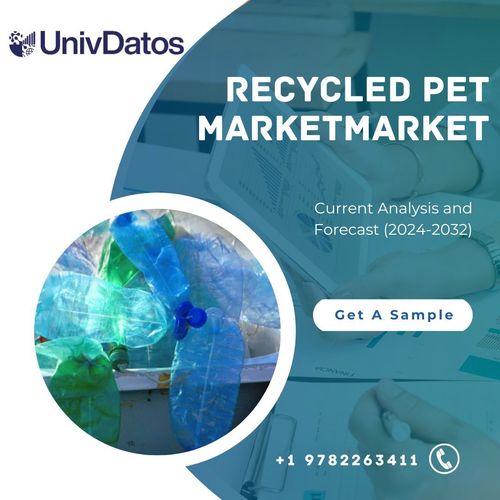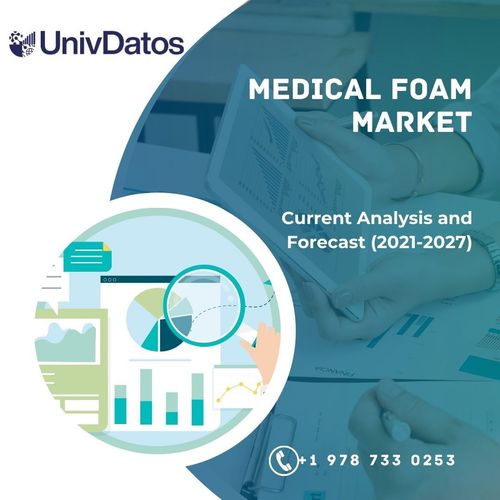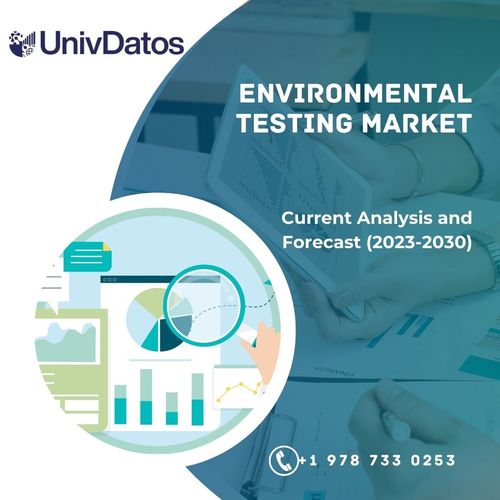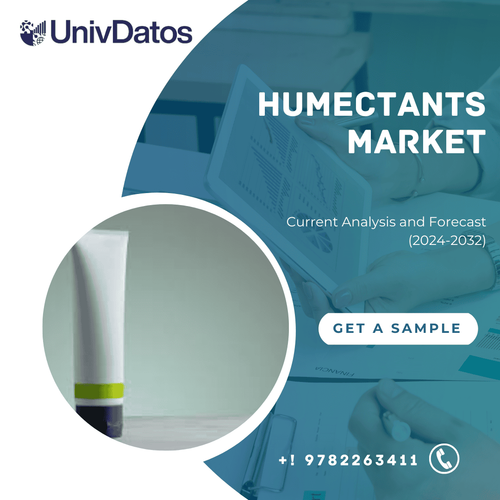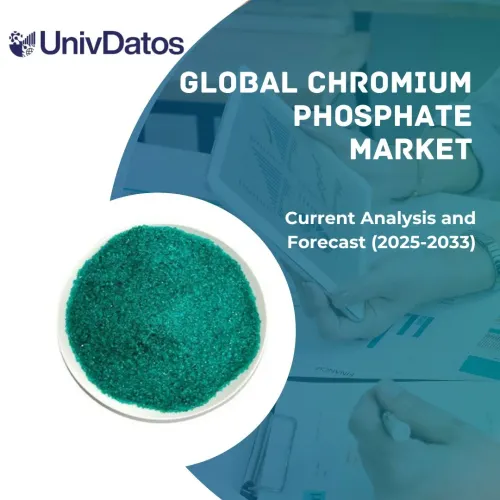- Home
- About Us
- Industry
- Services
- Reading
- Contact Us
Mesoporous Silica Market Size & Forecast
The Mesoporous Silica Market was valued at approximately ~USD 210 million in 2023 and is expected to grow at a strong CAGR of around 10.2% during the forecast period (2024-2032) owing to the rising product penetration in different application sectors and increasing effective R&D of cancer treatment using mesoporous silica globally.
Mesoporous Silica Market Analysis
The global market for mesoporous silica is a highly active segment industry involving silica materials with pore diameters within the range of 2-50 nm. These materials: MCM, SBA, and many other analogs, are valued for their large specific surface area, the ability to set the required pore structure, and a wide range of potential uses in catalysis, drug delivery, and the cleanup of the environment. The market is stimulated by growth in demand from the pharmaceuticals, energy, and chemicals sectors where reliability and standards of productivity cannot be overemphasized. Moreover, continuous innovations in synthesis procedures and altered material properties are improving the properties of mesoporous silica thereby elevating the scope of the mesoporous silica market. Because more investigations are revealing new uses for micro- and mesoporous silica materials, the mesoporous silica market can only look forward to sustained growth and development.
Recent Developments in the Market:
In March 2022, Novel nanotechnology research for real-world applications such as the enhancement and stability of the material, cotton, during wash cycles, was undertaken and published in the journal ACS Applied Nano Materials. This research comprised the development of water-repellent and anticorrosive superhydrophobic cotton fabrics with the use of silica nanoparticles.
Mesoporous Silica Market Trends
This section discusses the key market trends that are influencing the various segments of the mesoporous silica market, as identified by our team of research experts.
The MSM Series Segment Transforming Industry
The MSM (Mesoporous Silica Material) segment of the global mesoporous silica market is rapidly expanding due to the increased roles that MSM plays in the areas of pharmacy, catalysts, and ecology. The capacity to control pore or interconnection sizes and the high surface area of MSM make this material ideal for scientists and industries experimenting and working in nanotechnology and material science. Due to advancements in the standards of production and consumption in industries leading to efficiency and sustainability MSM continues to be in high demand. In addition, improvements in the synthesis method and rising focus on research and development shall improve the performance and versatility of MSM hence giving it a healthy growth rate in the mesoporous silica market.
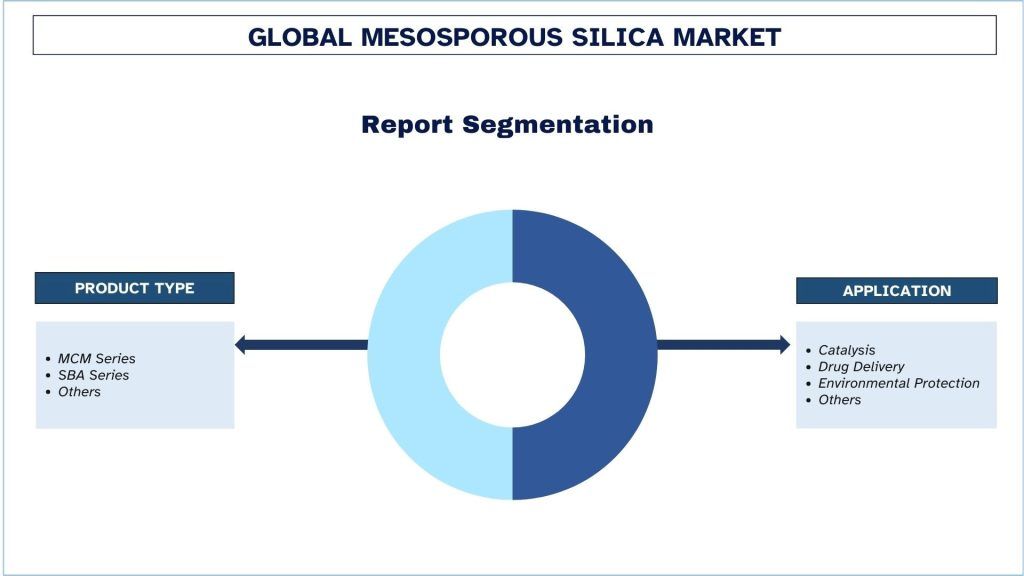
Asia-Pacific is expected to grow at a significant rate in the forecast period
The mesoporous silica market in the Asia-Pacific region is expected to grow significantly during the correlated period because of industrialization, new and improving demand for materials in pharmaceuticals, catalysis, and environmental applications. Currently, Asian nations such as China, India, and Japan have stepped up investment in R&D activities, which has triggered the development of additional uses of mesoporous silica in drug delivery systems and catalysis procedures. The growing pharmaceutical industry in these nations is particularly pertinent because mesoporous silica displays desirable characteristics for micro/nanoparticle encapsulation and release control.
Mesoporous Silica Industry Overview
The mesoporous silica market is competitive, with several global and international market players. The key players are adopting different growth strategies to enhance their market presence, such as partnerships, agreements, collaborations, geographical expansions, and mergers and acquisitions. Some of the major players operating in the market are Merck KGaA; American Elements; nanoComposix; Micropore Technologies Limited; Otto Chemie Pvt. Ltd.; MKnano; W. R. Grace & Co.-Conn.; Ultrananotech Private Limited; Glantreo; ACS Material.
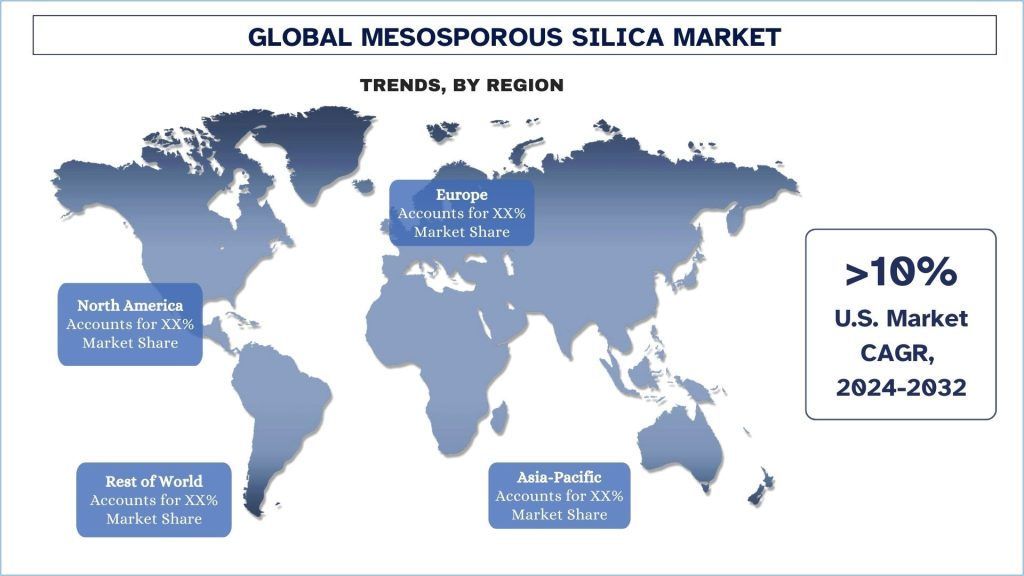
Mesoporous Silica Market News
In September 2024, Sigrid Therapeutics signed a strategic partnership with GetHealthy.store the leading US provider of practice-focused e-commerce solutions for healthcare and nutritional products. The partnership aims to meet the growing demand for Sigrid’s Glucose Stabiliser which offers a game-changing non-pharmaceutical solution to sustained blood sugar management. Since its initial trial launch in Florida earlier this year, Glucose Stabiliser is already loved by 1000s of customers, with users reporting reduced bloating, increased energy levels, and other significant health benefits – with no reduction in muscle mass. This follows similar success in the Nordics and the UK. Glucose Stabiliser capsules work by using Sigrid’s patented SiPore silica to slow down carbohydrate digestion. Silica is a natural GRAS-certified material. Taken orally pre-meal Glucose Stabiliser thus provides an effective non-pharmaceutical defense against glucose spikes.
Mesoporous Silica Market Report Coverage
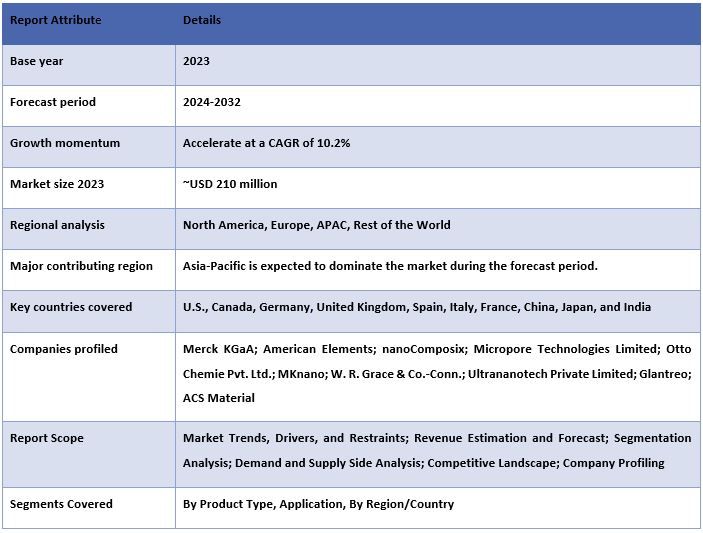
Reasons to buy this report:
- The study includes market sizing and forecasting analysis validated by authenticated key industry experts.
- The report presents a quick review of overall industry performance at one glance.
- The report covers an in-depth analysis of prominent industry peers with a primary focus on key business financials, product portfolios, expansion strategies, and recent developments.
- Detailed examination of drivers, restraints, key trends, and opportunities prevailing in the industry.
- The study comprehensively covers the market across different segments.
- Deep dive regional level analysis of the industry.
Customization Options:
The global mesoporous silica market can further be customized as per the requirement or any other market segment. Besides this, UMI understands that you may have your own business needs, hence feel free to connect with us to get a report that completely suits your requirements.
Table of Content
Research Methodology for the Mesoporous Silica Market Analysis (2024-2032)
Analyzing the historical market, estimating the current market, and forecasting the future market of the global mesoporous silica market were the three major steps undertaken to create and analyze the adoption of mesoporous silica in major regions globally. Exhaustive secondary research was conducted to collect the historical market numbers and estimate the current market size. Secondly, to validate these insights, numerous findings and assumptions were taken into consideration. Moreover, exhaustive primary interviews were also conducted, with industry experts across the value chain of the global mesoporous silica market. Post assumption and validation of market numbers through primary interviews, we employed a top-down/bottom-up approach to forecasting the complete market size. Thereafter, market breakdown and data triangulation methods were adopted to estimate and analyze the market size of segments and sub-segments of the industry pertains to. Detailed methodology is explained below:
Analysis of Historical Market Size
Step 1: In-Depth Study of Secondary Sources:
A detailed secondary study was conducted to obtain the historical market size of the mesoporous silica market through company internal sources such as annual reports & financial statements, performance presentations, press releases, etc., and external sources including journals, news & articles, government publications, competitor publications, sector reports, third-party database, and other credible publications.
Step 2: Market Segmentation:
After obtaining the historical market size of the mesoporous silica market, we conducted a detailed secondary analysis to gather historical market insights and share for different segments & sub-segments for major regions. Major segments are included in the report, such as product type, application, and region. Further country-level analyses were conducted to evaluate the overall adoption of testing models in that region.
Step 3: Factor Analysis:
After acquiring the historical market size of different segments and sub-segments, we conducted a detailed factor analysis to estimate the current market size of the mesoporous silica market. Further, we conducted factor analysis using dependent and independent variables such as product type, application, and regions of the mesoporous silica market. A thorough analysis was conducted for demand and supply-side scenarios considering top partnerships, mergers and acquisitions, business expansion, and product launches in the mesoporous silica market sector across the globe.
Current Market Size Estimate & Forecast
Current Market Sizing: Based on actionable insights from the above 3 steps, we arrived at the current market size, key players in the global mesoporous silica market, and market shares of the segments. All the required percentage shares split and market breakdowns were determined using the above-mentioned secondary approach and were verified through primary interviews.
Estimation & Forecasting: For market estimation and forecast, weights were assigned to different factors including drivers & trends, restraints, and opportunities available for the stakeholders. After analyzing these factors, relevant forecasting techniques i.e., the top-down/bottom-up approach were applied to arrive at the market forecast for 2032 for different segments and sub-segments across the major markets globally. The research methodology adopted to estimate the market size encompasses:
- The industry’s market size, in terms of revenue (USD) and the adoption rate of the mesoporous silica market across the major markets domestically.
- All percentage shares, splits, and breakdowns of market segments and sub-segments.
- Key players in the global mesoporous silica market in terms of products offered. Also, the growth strategies adopted by these players to compete in the fast-growing market.
Market Size and Share Validation
Primary Research: In-depth interviews were conducted with the Key Opinion Leaders (KOLs) including Top Level Executives (CXO/VPs, Sales Head, Marketing Head, Operational Head, Regional Head, Country Head, etc.) across major regions. Primary research findings were then summarized, and statistical analysis was performed to prove the stated hypothesis. Inputs from primary research were conso0lidated with secondary findings, hence turning information into actionable insights.
Split of Primary Participants in Different Regions
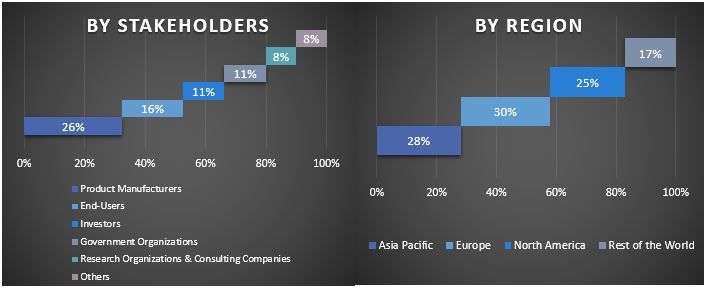
Market Engineering
The data triangulation technique was employed to complete the overall market estimation and to arrive at precise statistical numbers for each segment and sub-segment of the global mesoporous silica market. Data was split into several segments and sub-segments after studying various parameters and trends in the areas of the product type, application, and regions in the global mesoporous silica market.
The main objective of the Global Mesoporous Silica Market Study
The current & future market trends of the global mesoporous silica market were pinpointed in the study. Investors can gain strategic insights to base their discretion for investments on the qualitative and quantitative analysis performed in the study. Current and future market trends determined the overall attractiveness of the market at a regional level, providing a platform for the industrial participant to exploit the untapped market to benefit from a first-mover advantage. Other quantitative goals of the studies include:
- Analyze the current and forecast market size of the mesoporous silica market in terms of value (USD). Also, analyze the current and forecast market size of different segments and sub-segments.
- Segments in the study include areas of the product type, application, and regions.
- Define and analyze the regulatory framework for the mesoporous silica
- Analyze the value chain involved with the presence of various intermediaries, along with analyzing customer and competitor behaviors of the industry.
- Analyze the current and forecast market size of the mesoporous silica market for the major region.
- Major countries of regions studied in the report include Asia Pacific, Europe, North America, and the Rest of the World
- Company profiles of the mesoporous silica market and the growth strategies adopted by the market players to sustain in the fast-growing market.
- Deep dive regional level analysis of the industry.
Frequently Asked Questions FAQs
Q1: What is the mesoporous silica market's current market size and growth potential?
Q2: What are the driving factors for the growth of the mesoporous silica market?
Q3: Which segment has the largest share of the mesoporous silica market by product type?
Q4: What are the emerging technologies and trends in the mesoporous silica market?
Q5: Which region will dominate the mesoporous silica market?
Related Reports
Customers who bought this item also bought

